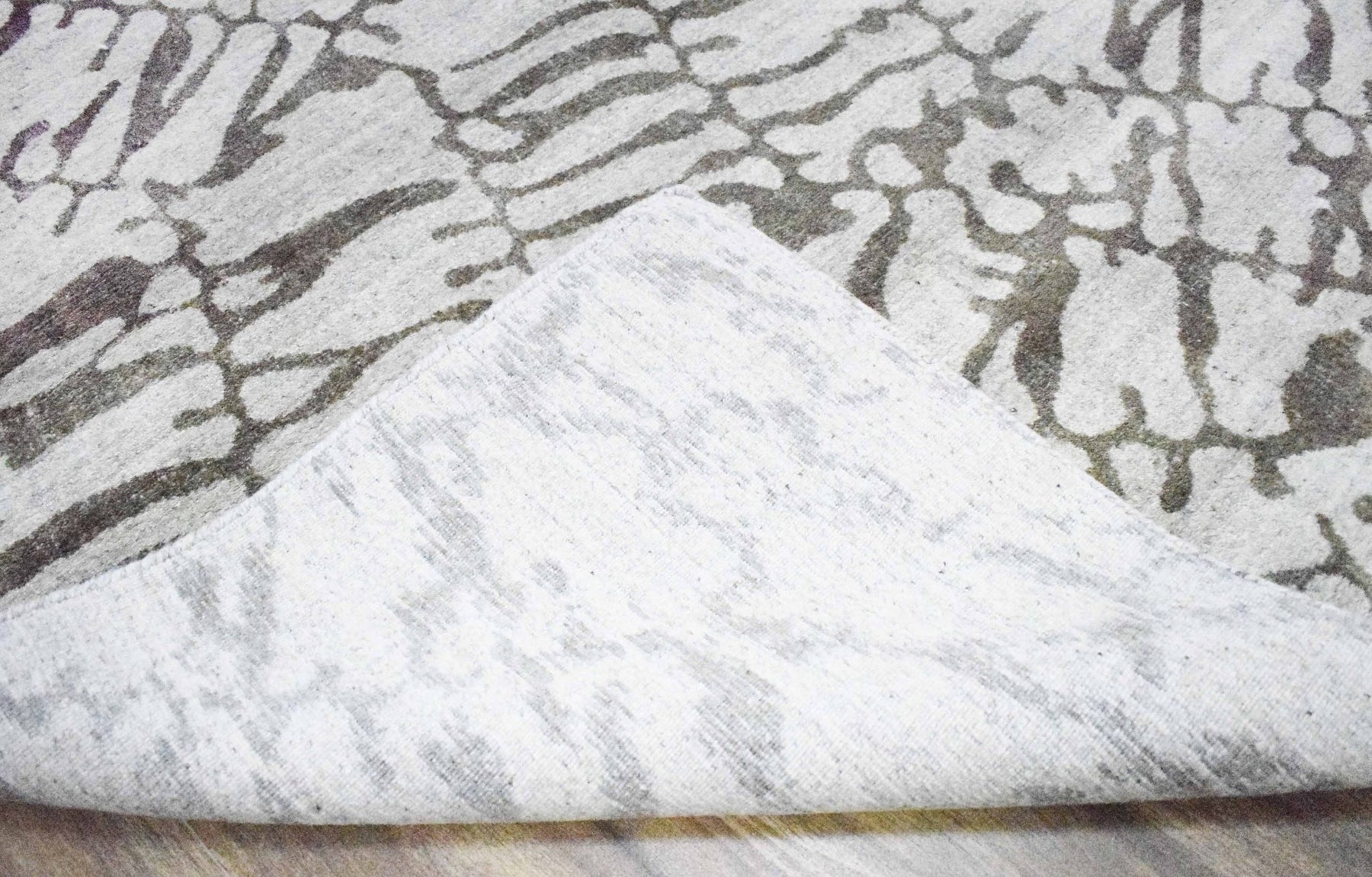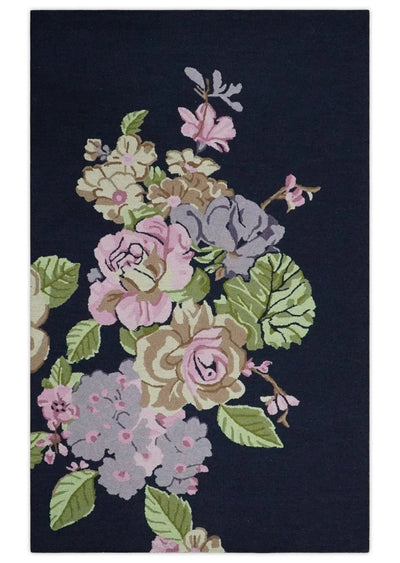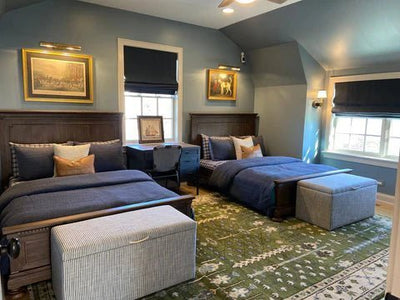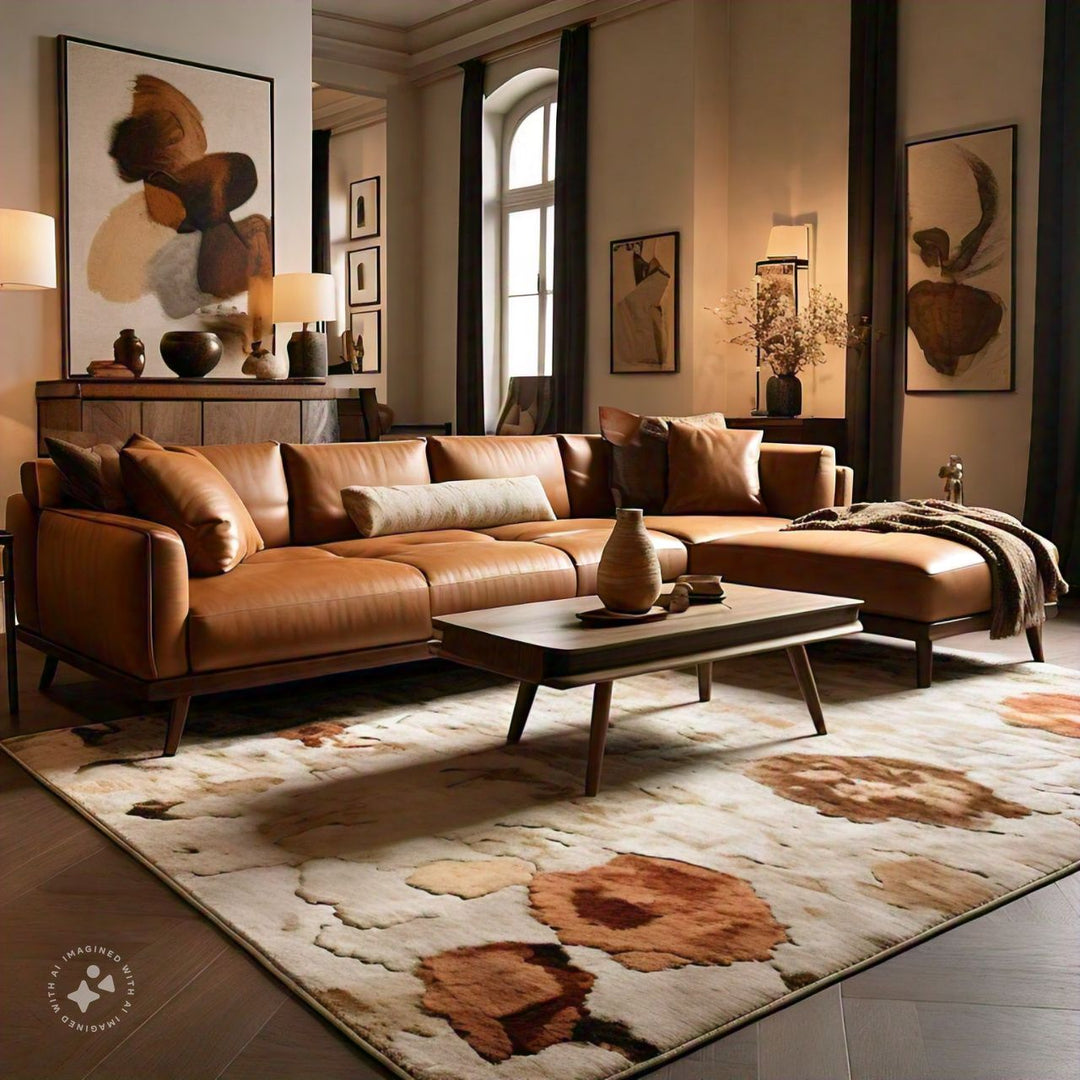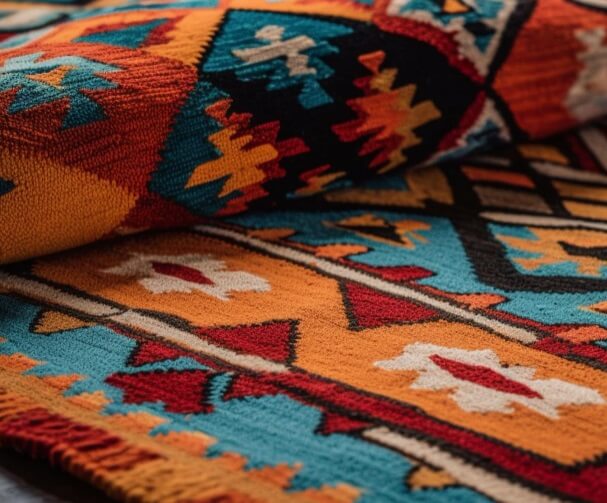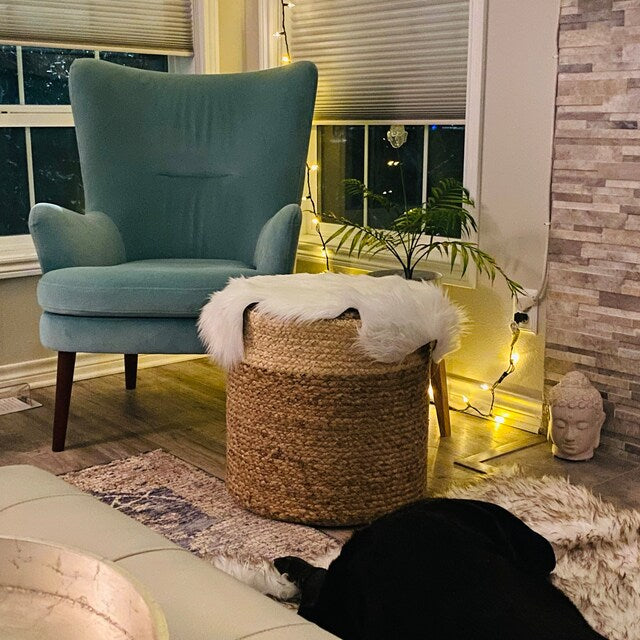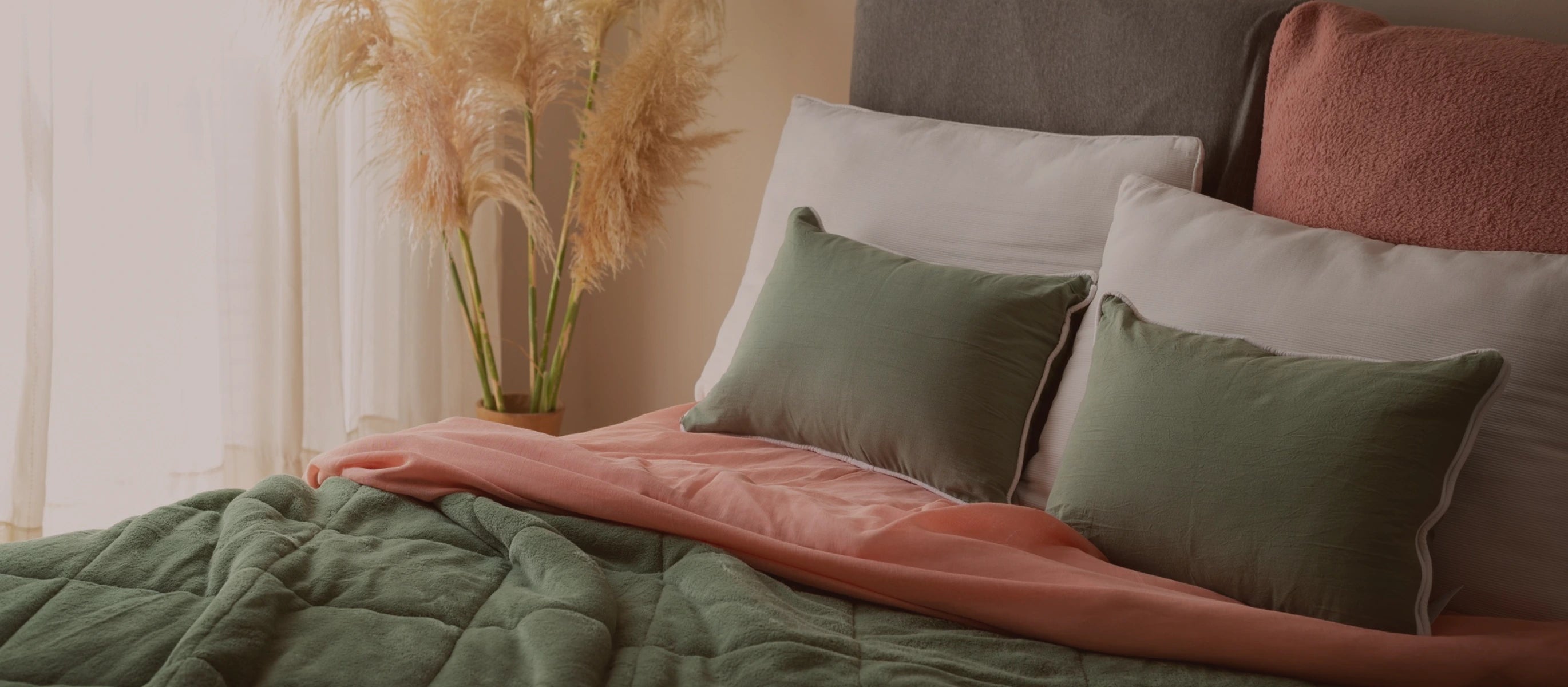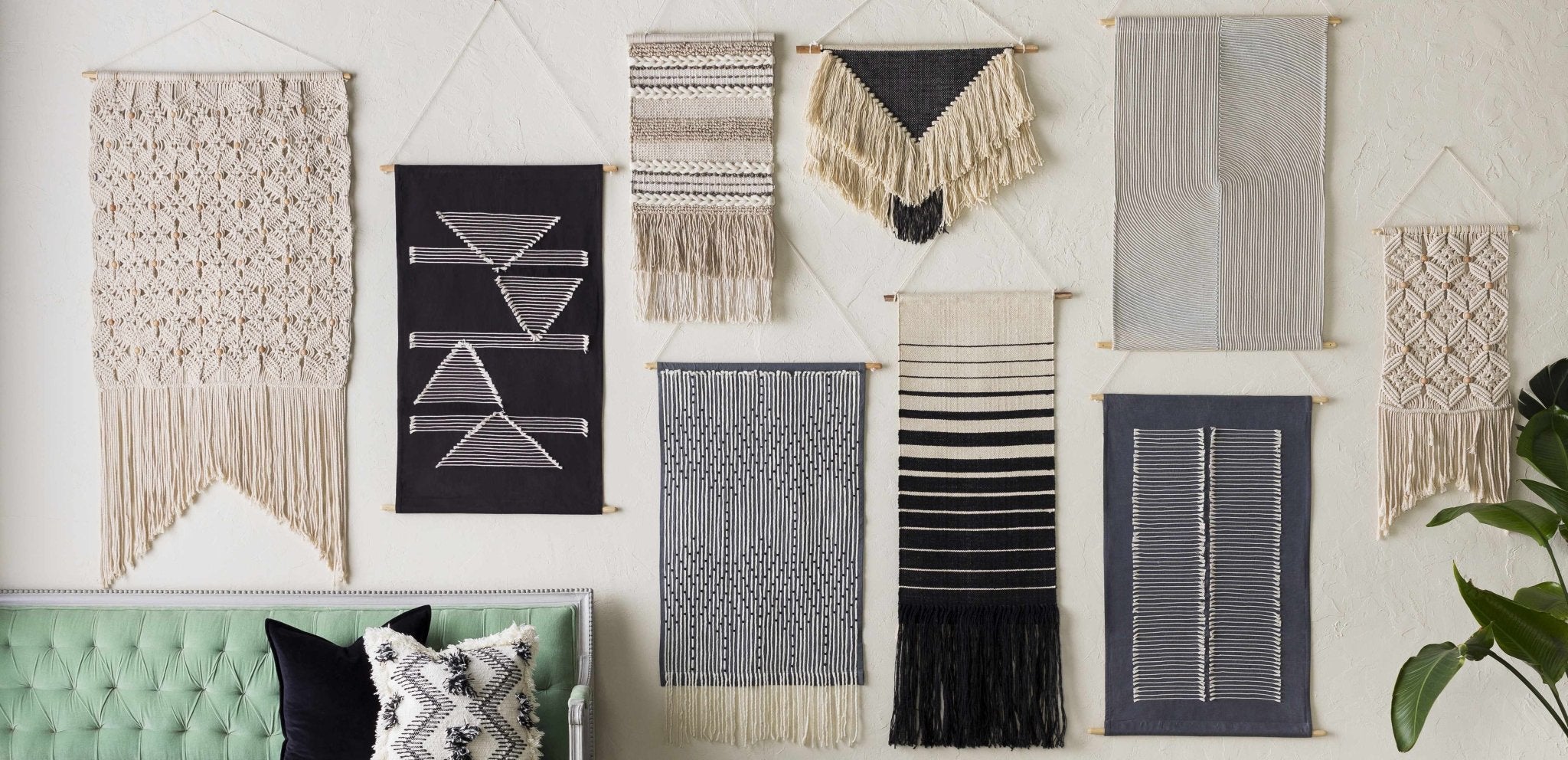Types of Rugs Based on Construction, Patterns, Materials & More
1. Rug Construction Types
- Hand-Knotted Rugs
- Hand Tufted Rugs
- How to Identify Hand Tufted Rugs?
- Clean and Care of Hand-Tufted Rug
- Hand Tufted vs Hand-Knotted Rugs
- Flatweave Rugs
- Difference between Flatweave, Kilim, and Dhurrie Rugs
- Hand Loom Rugs
- Type of Hand Loom Rugs
- Loom Knotted Back
- Single back
- Double Back
- Hooked Rugs
- Distinguishment Between Hand Tufted and Hand Hooked from Hand-Knotted Rugs
- Hand Hooked vs Hand Tufted Rugs
- Hide Rugs
- How to Clean Hide Rugs
- How to use hide rugs
- Braided Rugs
- Materials for Braided Rugs
- Braided rugs durability
- How to Clean Braided Rugs
- Machine Made Rugs
2. Rug Shapes
- Rectangle
- Square
- Round
3. Rug Patterns
- Geometric
- Floral
- Southwestern
- Traditional
4. Popular Rug Colors
5. Rug Materials
- Best Rug Materials
- Long-lasting Rug Materials
- Cotton vs Wool Rugs
6. Type of Rug Textures
Firstly, the type of Rug can be differentiated by its pile. If the rug has a pile or not.
Pile Rugs
Rugs with piles can be machine-made or handmade. These rugs feature a pile, which adds to the thickness of the carpet. Because of the manner, the rug was made, it has a deep pile. They've done it either by hand-tying the knots or by machine weaving on a power loom.
Without A Pile Rugs
Flatweave rug have no pile. It signifies that the strands are weaved back and forth, like in Native American rugs or Kilim rugs from Iran or Turkey. Others, such as Dhurrie rug from India and Pakistan. They are all flat-woven area rugs.
1. Rug Construction Types
- Hand-knotted
- Hand-tufted
- Flatweave or Kilims or Dhurrie
- Handloom
- Machine-made
- Hooked Rugs
- Hide Rugs
- Braided Rugs
Hand-Knotted Rugs
There is something special and unique about a hand-knotted rug. Traditional hand-knotted rugs are known for their magnificent beauty, enduring durability, and product of fine craftsmanship technique. These rugs are true paragons that can last for generations and are sure to become a cherished family heirloom.
Hand-knotted carpets are created on a specially built loom employing the traditional hand-knotting process. Making hand-knotted rugs is an ancient method that originated in Central Asia, dating back to the 4th century B.C. The majority of the traditional rug is made using this weaving technique and some popular types of hand-knotted rugs are Oriental rugs, Persian rugs, and Kashmir rugs.
The creation of hand-knotted rugs is a labor-intensive process that requires craftsman skill. Its unique weaving technique involves inserting thousands of knots and is individually tied to a base or rug foundation. The pile of the rug is made up of these knots, and the weaving procedure is normally done from the bottom up. Hand-knotted Rugs are of three different types by knotting techniques.
- Senneh or Persian knots
- Turkish knots
- Jufti Knots
Click here to know more about Hand-Knotted Rug and how to identify them.
Hand Tufted Rugs
A hand-tufted rug starts with a stretched canvas on a frame, strands of yarn punched into it, and the design scribbled on it with a tufting tool. The procedure is less time-consuming and labor-intensive than hand-knotted carpeting, and it needs less expertise.
How To Know A Rug Is Hand-Tufted?
The best way to tell if a rug is hand-tufted is to look for the scrim backing on the back. Some hand-tufted carpets may be mistaken for hand-knotted rugs. They are often made of wool and may last for up to 20 years, depending on the creator and materials used. Hand-tufted carpets are not made on looms, but rather using tufting guns. Additional patterns can be carved into the rug with a tufting gun.
A hand-tufted rug can have a colorful, geometric, floral, paisley, or striped design or anything else you've seen on a machine manufactured or hand-knotted rug.
Hand-Tufted vs. Hand-Knotted
Hand-tufted and hand-knotted rugs are both manufactured by hand, but that's where the similarities end. Both methods may produce wonderful rugs, but they differ in price, look, and durability.
Depending on the pattern, a hand-knotted rug might take a long time to make. A higher knot density indicates higher quality and a higher price.
Because hand-tufted rugs are manufactured at a faster rate and lack the detail of hand-knotted rugs, they lack the same creative cache and physical quality to persist for generations. They are, nonetheless, more durable than mass-produced, machine-made rugs.
Clean and Care Of Hand-Tufted Rug
Hand-Tufted rugs cannot be washed. Tufted carpets are easily recognizable by the presence of a piece of fabric tacked to the back. Typically, the pile is made of wool. They are composed of three or four layers that are kept together by latex glue, much like a sandwich. Because latex is a water-based adhesive, it dissolves in the washing machine.
A tufted rug's face is created by punching strands through a piece of fabric to create the pile you walk on. To give the rug stability, a "scrim" or supplementary backing is applied. When we wash a tufted rug, the layers are likely to get loosened.
Flatweave Rugs
These are the same as Kilim and Dhurrie Rugs. Because flatweave rugs have no pile, they do not shed. They are woven on a loom rather than hand-knotted. Weaving is accomplished by interlacing warp (length) and weft (width) threads. This weaving method results in a rug that is both thin and elegant.
This is not the case with Dhurrie carpets. Flatweave rugs, unlike pile carpets, are reversible. In most situations, the design patterns on both sides of the carpet are the same. Because they are reversible, you may utilize either side of the flat-weave carpets as needed.
The majority of flat weave or kilim carpets have a geometrical and diagonal design pattern. These rugs are reasonably priced. They preferred it for everything from bathrooms to kitchens.
Wool is the most important and fundamental material used in the production of a flat weave rug. The warps and wefts of most flatweaves are made of wool, or both. Wool is the weft material required for cotton warps. Art silk is another material that is utilized in place of wool.
The distinction between Flatweave, Kilim, and Dhurrie Rugs
The primary distinction between flatweave, kilim, and dhurrie carpets is mainly in their names. Some rug importers refer to it as kilim, which is a tribal term. Some call it Dhurrie, which is a common name among Indians. In recent times, it is known as Flatweave.
Handloom Rugs
Handloom Rugs are hand-knotted carpets that come in three types. It is a change in the knots and wefts. The knots here wrap around the warps. The thickness of the rods determines the pile height in this case. Only restricted design patterns of handloom rugs are possible (having cut-pile, loop-pile, or a combination of both).
After the weaving is finished, a backing is connected to the rug with synthetic latex material, which provides the handloom carpet strength and prevents unraveling. Handloom carpets are among the least expensive forms of rugs. They are easy to maintain and clean.
Types of Hand Loom Rugs
Handloom carpets are the most inexpensive of all hand-woven rugs from India. They may be constructed as both pile and flatweave rugs. And Loomed rugs are handwoven in three different styles:
-
Loom-knotted back
-
Single back
-
Double back
Loomed carpets, like hand-tufted rugs, typically have a loose back at their first stage. That looseness allows them to fold effortlessly from all four corners.
Then there was the "double back hand-loom rug" technique, which has a tight back like hand-knotted carpets. Handloom carpets are one of the many varieties of handmade carpets. They are woven on a vertical loom using a mounted wrap for support.
Hooked Rugs
Hooked rugs are produced by hand with a needle-like instrument. They are woven on canvas with a background that helps the pattern to stay together. They are low-cost and stylish carpets.
Hooked rugs are made by dragging fabric or yarn loops through a sturdy woven substrate like linen, burlap, or rug wrap. These carpets may have basic or sophisticated motifs ranging from simple geometric forms to elaborate bird and tree themes.
What distinguishes tufted and hooked rugs from hand-knotted carpets?
Tufted and hooked rugs differ greatly from hand-knotted rugs in that hand-knotted rugs are the most difficult to create, but tufted and hooked rugs are not as complicated. It takes years of experience for artisans crafting hand-knotted carpets to achieve the necessary expertise.
What distinguishes Hooked Rugs from Tufted Rugs?
There are distinct variations between Hooked and Tufted carpets that you should be knowledgeable of. The surface pile of tufted and hooked rugs is the primary distinction between the two. Tufted rugs feature cut pile without loops, but hooked rugs contain loops.
Hooked carpets are made mostly with a hook similar to a crochet hook. There are a few carpets that have both loops and chopped pile on the surface. Notably, after finishing the hooked rugs, the craftsmen apply liquid latex on the back of the carpets to preserve the stitching. The latex covering gives better cushioning as well.
Hide Rugs
Hide Rugs are the animal's outer skin. Every animal's skin has a unique pattern and texture, which is what makes them fascinating.
The skin is processed in a variety of ways so that only leather and furs remain. Sheepskin, goat hide, deer hide, zebra hide, and cow hide are some common varieties of hide rugs.
Are Hide Rugs easy to clean?
Cowhide rugs are ideal for use in all parts of your house, even high-traffic areas, due to the hide's natural durability. Cowhides rugs are stain-resistant and surprisingly easy to keep and care for, lasting for many years without replacement.
Where do you put a hide rug?
When compared to conventional rugs that are rounded, squared off or rectangular in shape, cowhide rugs nearly often have fairly uneven patterns.
Furthermore, no two cowhide rugs are exactly the same in terms of design, shape, or overall size. There will always be minor changes between different cowhide rugs, which is why there is no such thing as a "one-size-fits-all" approach to arranging it in a place.
Cowhide Rugs may be used to create a centerpiece on a wooden floor or to provide coziness to a bedroom. Their curving lines may be utilized to reduce the angularity of a straight-sided space, and their longevity allows them to be employed in high-traffic areas such as corridors.
Braided Rugs
The braided rug was a vital part of early Colonial American culture. Settlers used to make a floor covering out of scraps of clothes and other extra materials to offer warmth and protection for the residents and guests of a dwelling.
Banded braid construction, fabric braid construction, flat braid construction, and yarn braid construction are all options for braided area rugs. Banded braid constructions include large bands of either solid coloured or variegated braids created in specified patterns to provide a pleasing, thick appearance. Cloth braid construction dates back to a time when outdated clothes were cut into strips and hand-braided into a floor covering.
A flat braid layout is a prevalent approach since it is one of the simplest and most traditional. Three fabric or yarn ropes are interwoven. A yarn braid structure transforms yarn which is its first stage into a one-of-a-kind final area rug.
What material is best for a braided rug?
Braided rugs may be created from a variety of fibers. It might be made of yarn, cloth, or jute. Wool fiber is ideal for braided rugs because it is soft and robust while being strong enough to lie flat on the floor. It keeps its colors nicely and resists soiling.
Cotton produces an excellent rug, but it is heavier, less soft, and more difficult to keep clean. New and old materials can be combined, although it is preferable if they are all wool or all cotton. Plain fabrics, stripes, checks, plaids, and floral motifs are all appealing. Figured fabrics with an all-over pattern or a dominant color work best.
Do braided rugs last?
A well-made, high-quality braided rug will survive for decades. A well-made, high-quality braided rug will lay flat from the outset. You should never have to labor with a rug to smooth it out just to have it not stay that way.
The quality and kind of materials used to determine its strength. The durability is also affected by the location of use and the amount of foot traffic.
Can you vacuum the braided rug?
When cleaning a braided rug, avoid using a vacuum with a beater bar or extremely strong suction. If your vacuum has an adjustable suction level, choose the lowest setting. Many new vacuums are completely unsafe and damaging to braided carpets, particularly fragile fabrics like woven silk.
Machine Made Rugs
They are carpets that are woven by massive electrical machinery. These motorized looms use electronic processors to manufacture rugs in a sequential fashion. Machine-made carpets, as opposed to handwoven rugs, need less time to create. The materials utilized in the production of these carpets vary. Wool is typically combined with synthetic fibers such as polypropylene, nylon, and other materials such as polyester, art silk, and acrylic.
There is a reason why machine-made carpets are manufactured with a combination of wool and synthetic fibers. Pure wool is a weaker fiber, whereas synthetics are more powerful. When these two materials combine, they become both soft and hard. As a result, power looms are not disrupted by material thread breaks every now and then. Otherwise, wool by itself is a problem during the machine weaving process. To learn more about the softest rug materials, give a quick read to our blog.
Learn about different rug terms on our rug glossary page, to make an informed purchase.
2. RUG SHAPE TYPES
The shape of your rug significantly impacts the overall appearance of your room. The shape of the rug in your room must be determined by either personal taste or the necessities of your home décor.
Rugs can be classified according to their size and form. Rugs come in a variety of sizes and shapes to fit any space. Living room rugs are often huge, whereas bedroom rugs are smaller. A runner rug is more appropriate for the kitchen. Bathroom carpets come in sizes as little as 3x2 size.
Also read: Bedroom Rug Ideas
Rugs are often available in three shapes, as seen below.
1. RECTANGLE
Rugs with rectangular forms are the most frequent of all rug shapes. These carpets come in sizes ranging from 2x3 to 9x12 and beyond.
Runner rugs are narrow carpets having a limited width and an extremely long length. The runner is a type of carpeting that is ideal for use in kitchens, corridors, and other confined areas.
2. SQUARE
A square-shaped rug can be used in any space that is square in shape rather than a rectangular rug.
3. ROUND
Round rugs can have the same pattern and design as rectangular and square rugs. Round Persian rugs are just as beautiful as other forms.These days, round jute rugs are popular. Try putting one in the center of your stairwell hall; they are eye-catching.
Read: When to use a Round rug?
Other common forms for decorating include hexagons, pentagons, animal skin pattern shapes, and others. If there are any unusual forms, speaking with a bespoke rug maker will help.
3. RUG PATTERN TYPES
Another important consideration when purchasing a new carpet is the design of the rug. A poor rug pattern might derail the overall decorating scheme. So design your room around the décor components that are currently present.
Some of the fundamental patterns are as follows:
GEOMETRIC
Geometric motifs such as Trellis, Quatrefoil, and Polka dots are common in these carpets. This motif is repeated in modern contemporary carpets.
FLORAL
Floral Rugs have designs that include flowers, leaves, buds, and branches. This design pattern is seen on Persian oriental rugs.
SOUTHWESTERN
Southwestern Rugs, which were created by native Americans, reflect the tale of early American growth. This rug features bold, gorgeous motifs with a touch of historical patterns. A Southwestern Rug is an excellent choice for your living room, kitchen, bedroom, or bathroom! Its one-of-a-kind patterns in any size, shape, or color fit any place you desire.
TRADITIONAL
Traditional rugs are most commonly recognized as Persian rugs.
Iran, once known as Persia, is where Persian carpets are made. Pomegranates and flowers in their husks are only two examples of the traditional items they depict. The tones of blue, red, brown, gold and beige are the most common.
In honor of the world's oldest design, Ikat carpets have been named after them. In many ancient societies, the Ikat design may be traced back more than a millennium. From Peru to Japan, the stunning design may be found. Ikat rugs have a lower knot count than other oriental carpets, making them one of the most affordable.
4. RUG COLOR TYPES
The general ambiance of a space is created by the area rug and other furnishings. A bedroom may need to be peaceful and calm in order to promote relaxation, but a recreational environment may demand more energy and brightness. Light-colored carpeting in the living room.
- Light colors have the ability to make a small area look larger. Consider pastel colors, white, or a blend of pale and bright colors to make a space feel more expansive.
- A relaxing ambiance is created by using muted or cold hues such as blue, green, and purple. Light monochromatic color palettes are frequently effective for this purpose.
- Colors that are bright and brilliant generate a sense of excitement. Oranges, reds, and brilliant lime greens may invigorate your environment.
- Rich and deep colors make a space feel more personal. Rugs in burgundy, chocolate, or navy are ideal for a warm family room.
Also Read: Rug Color Guide: How to Pick a Rug Color?
5. RUG MATERIALS TYPES
Some of the most prominent carpet fibers are used by area rug producers.
- Wool
- Silk
- Viscose
- Cotton
- Natural Fiber
- Jute/hemp
- Sisal
- Seagrass
- Hide Rugs /Leather
- Polypropylene
- Microfiber/Polyester Rugs
- Nylon
Which materials are ideal for area rugs?
By far the greatest material for rugs and the traditional methods of creating carpets and rugs is high grade wool.
What is the longest-lasting rug material?
Yes, wool once more. If properly cared for, they can endure a century or more. Pure wool rugs are more expensive but last longer than other rug fibers. Learn more about storing your rugs well on our blog.
Rugs Made of Cotton vs. Wool
Woolen carpets outperform synthetic fiber rugs such as polypropylene, polyester, and nylon. Other materials include genuine silk, viscose (staple), bamboo silk, banana silk, and others.
Cotton carpets are used to create gorgeous dhurries and flat-weave rugs that are both inexpensive and functional.
6. RUG TEXTURED TYPES
The textures of a rug and a carpet can be vastly different. The distinction may be seen in their weave, texture, and look.
- Cut pile
- Loop pile
- Frieze
- Plush
- Cut and Loop.
- Saxony
- Shag
- Aubusson
- Plush
- Texture Carpet
- Plush
- Soft
- Velvish
- Abrash
- Rough
To know in-depth about rug textures, you can read this blog.
Rug Texture Matters: The Importance Of Choosing the Right Rug Texture




